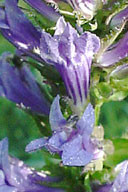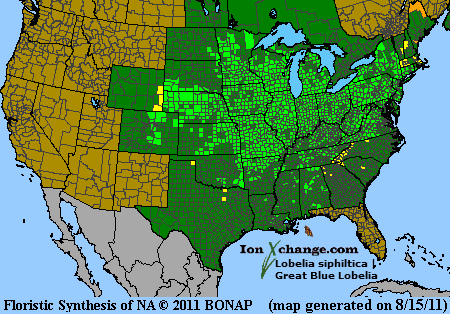 Loading... Please wait...
Loading... Please wait...- Home
- SEEDS
- SEED MIXES
- BUY PLANTS
- Info Request
-
Educational Videos
- Greenhouse Transplanting Demonstration
- Native Seed Cleaning demonstration at Ion Exchange Native Seed and Plant Nursery
- Attracting Butterflies
- Bidens - Bidens cernua Harvest Video
- Big Blue Stem Harvest
- Butterfly Milkweed Video
- Button Blazingstar - Liatris aspera Video
- Buttonbush - Cephalanthus occidentalis Video
- Canada Anemone - Anemone canadensis Harvest Video
- Cardinal Flower - Lobelia cardinalis Video
- Control Burn - Wildflower Field
- Cream Gentian - Gentiana flavida
- Culver's Root - Veronicastrum virginicum Video
- Cup Plant - Silphium perfoliatum Video
- Dormant Seeding | Planting
- Earthyman's Favorite Wildflowers Video
- Eco-Friendly Golf Course Seed Mix
- Floating Islands
- Fringed Loosestrife - Lysimachia ciliata Video
- Giant Yellow Hyssop - Agastache nepetoides Video
- Indiangrass - Sorghastrum nutans Video
- Iowa Prairie Partner Program
- Leadplant - Amorpha canescens (Potted) Video
- Meadow Blazingstar - Liatris ligulistylis
- Midland Shooting Stars - Dodecatheon meadii Video
- Native Plant Nursery Field Irrigation Experiment
- Nodding Onion - Allium cernuum Video
- Ohio spiderwort - Tradescantia ohiensis Video
- Old Man's Beard - Clematis virginiana blooms Video
- Oxeye Sunflower - Heliopsis helianthoides Video
- Prairie Spiderwort - Tradescantia bracteata
- Purple Coneflower - Echinacea purpurea Video
- Rain Garden or Water Garden Video
- Rattlesnake Master - Eryngium yuccifolium Video
- Riverbank Stabilization - Wetland Plants
- Rose Mallow - Hibiscus militaris Video
- Rosinweed - Silphium integrifolium Video
- Royal Catchfly - Silene regia
- Showy Tick Trefoil - Desmodium canadense Video
- Sneezeweed - Helenium autumnale Video
- Swamp Betony - Pedicularis lanceolata Video
- Swamp Milkweed - Asclepias incarnata Video
- Sweet Blackeyed Susan - Rudbeckia subtomentosa Video
- Tall Coreopsis - Coreopsis tripteris Video
- Urban Butterfly Garden
- Wild Bergamot - Monarda fistulosa Video
- Wild Geranium - Geranium maculatum Harvest
- Wild Goldenglow - Rudbeckia lanciniata Video
- Wild Petunia - Ruellia humilis Harvest Video
- Woodland Knotweed - Polygonum virginianum Video
- Yellow Coneflower - Ratibida pinnata Video
- Blog
- Resources
- Policies
Contact Us
Phone:
563-419-0837
or 563-535-7231
Email:
hbright@ionXchange.com
Browse Products
Add to Wish List
You Recently Viewed...
Our Newsletter
Product Description
Lobelia named after the 16th century herbalist, Matthias von Lobel
| Sun Exposure | Prairie, Savanna |
| Soil Moisture | Wet, Wet Mesic, Mesic |
| Bloom Time |
Summer, Fall July, August, September, October |
| Bloom Color | Blue |
| Max Height | 3 feet |
| Wetland Code | FACW+ |
| Germ Code | C(60),D |
| Seeds Per Packet | 1,000 |
| Seeds Per Ounce | 500,000 |
Found in prairie swales and wet prairies, along streams and in seepage areas. Generally grows to 3 feet in height but can reach 5 feet or more under ideal conditions Numerous blue-violet flowers bloom from July through September.
Native Americans made a leaf tea to treat colds, fevers, stomach ailments, croup, worms and nosebleeds. The same tea was gargled to ease coughs. A poultice was made from the leaves to ease headache pain and assist in healing hard to heal sores. Once used to induce sweating and urination.
Edible Uses: Unknown
Medicinal Uses: The root is cathartic, diaphoretic and emetic. It is used in the treatment of dropsy, diarrhoea, stomach complaints, syphilis and dysentery. A poultice of the root has been applied to sores that are hard to heal. The leaves are analgesic and febrifuge. An infusion has been used in the treatment of colds and fevers. A poultice of the crushed leaves has been applied to the head to relieve the pain of headaches. At one time in N. America the root of this plant was believed to be effective in the treatment of VD. When used in Europe, however, it was found to be ineffective. This might have been because the N. American Indians used the fresh root (which still contained the volatile oils) and also used it in conjunction with Podophyllum peltatum and Prunus virginiana, and then dusted the ulcers with the bark of Ceanothus americanus.
It was believed by some native North American Indian tribes that if the finely ground roots were secretly added to the food of an arguing couple then this would avert a divorce and they would love each other again. A homeopathic remedy is made from the root.
Herbal Uses: Unknown












